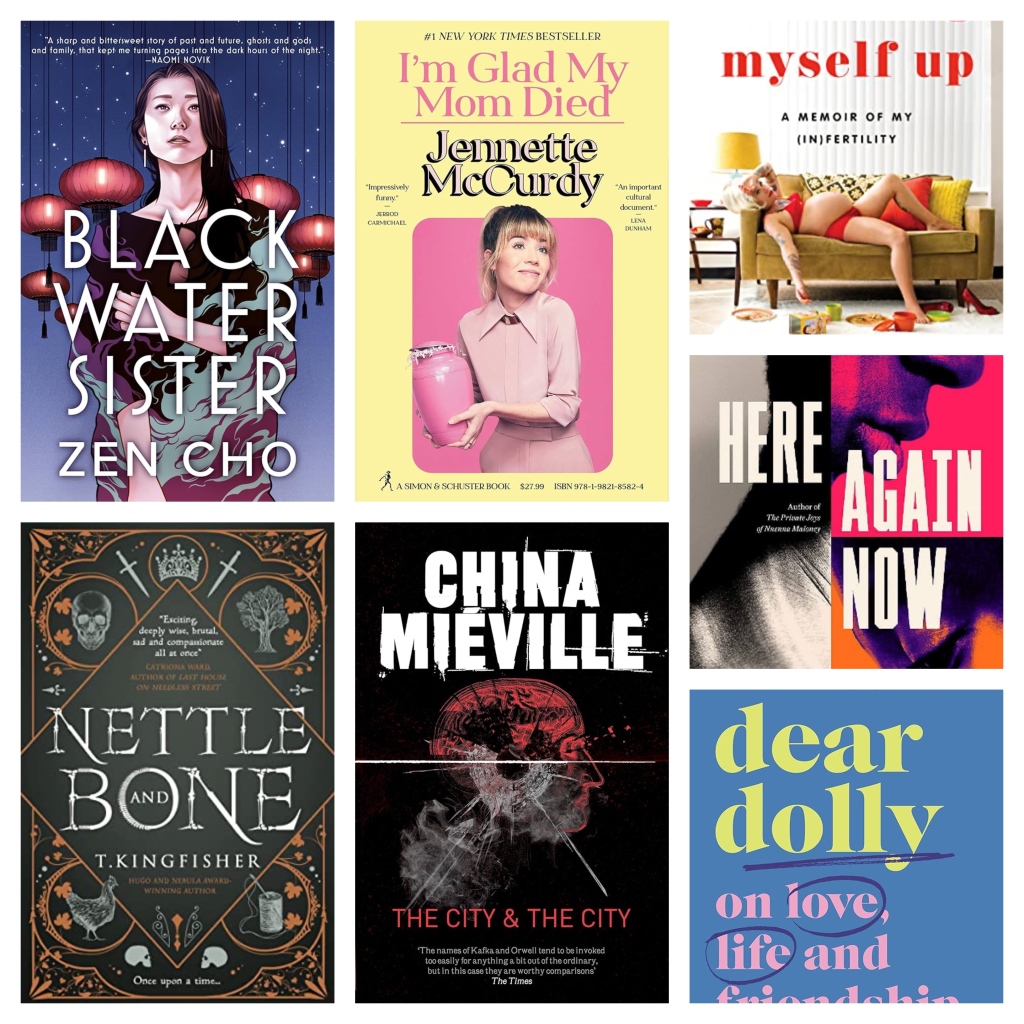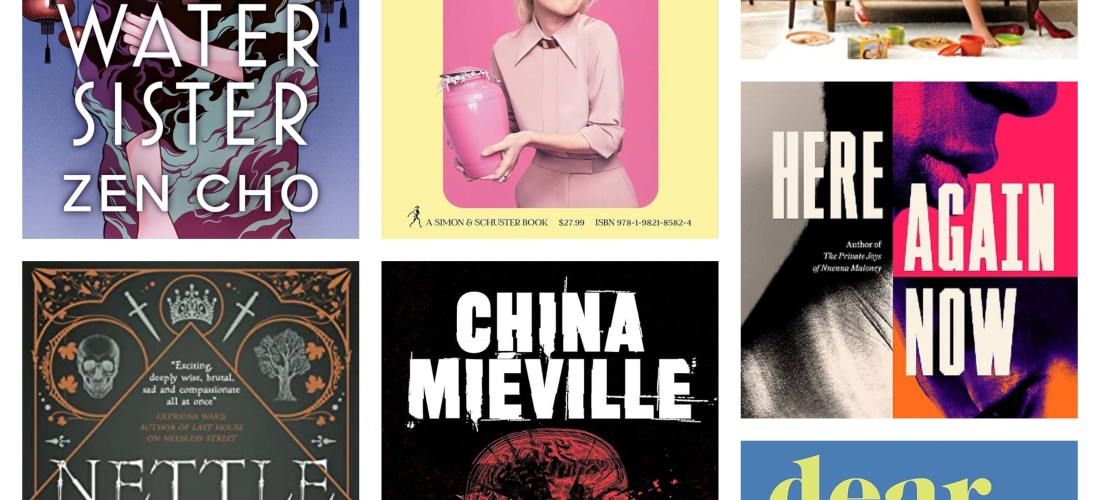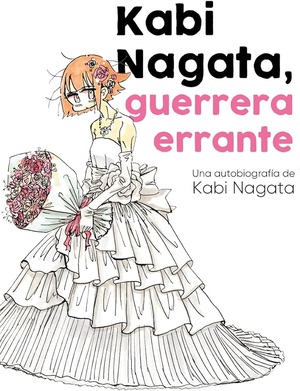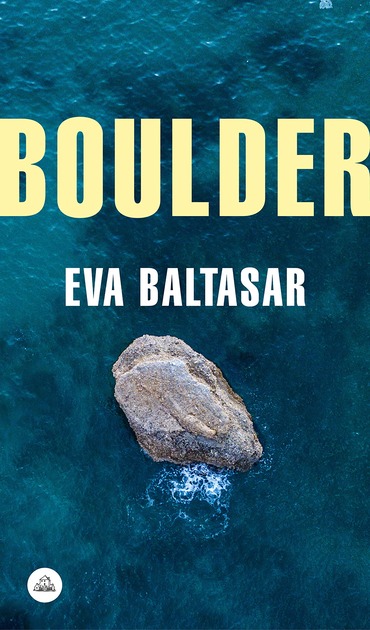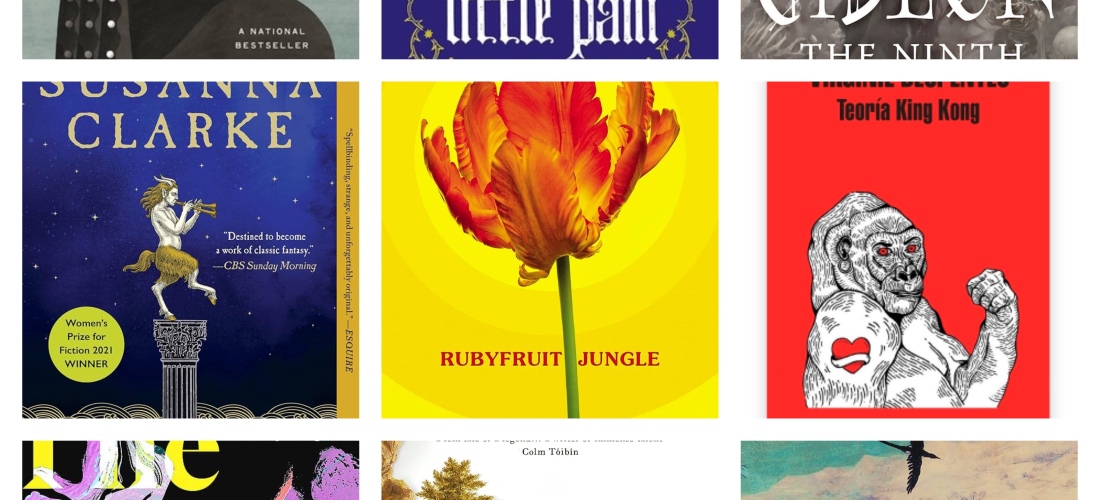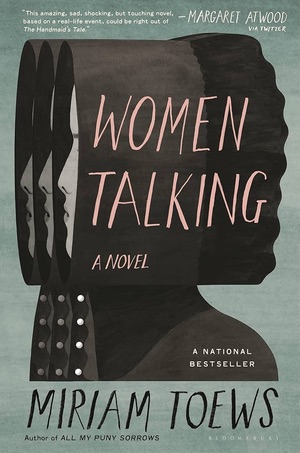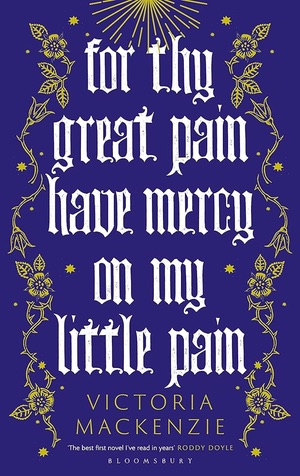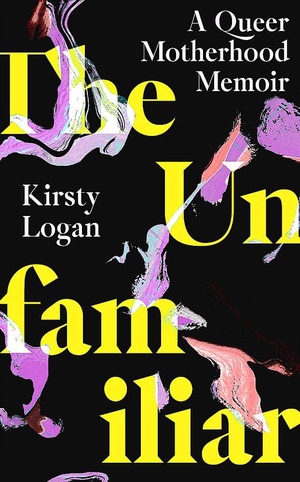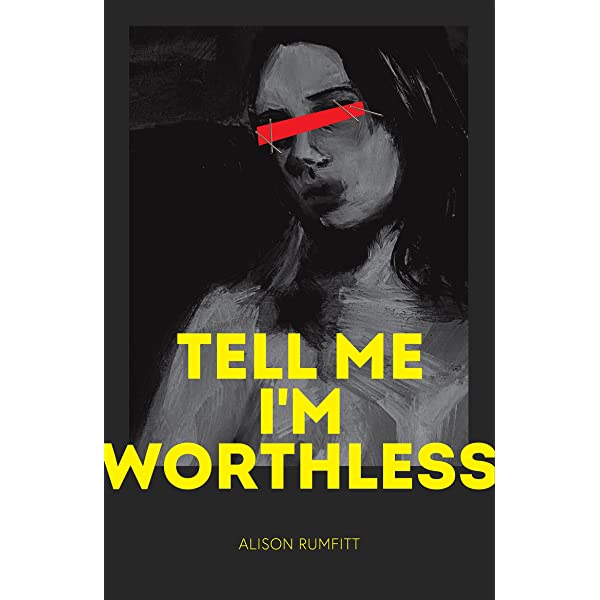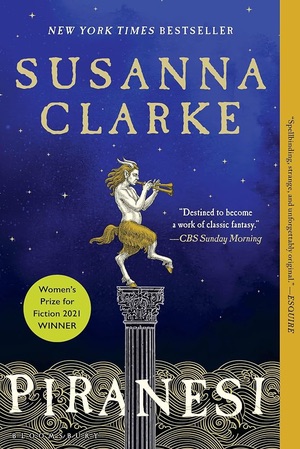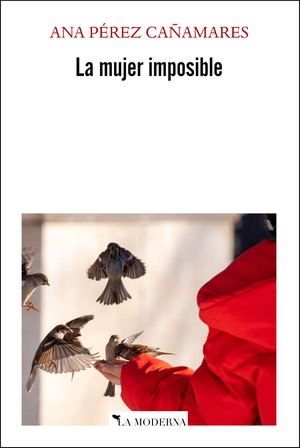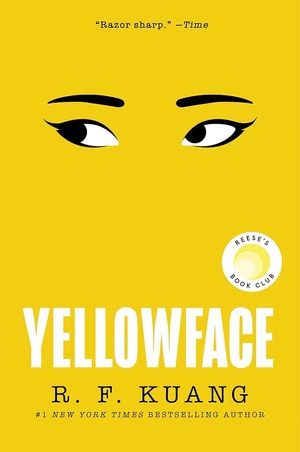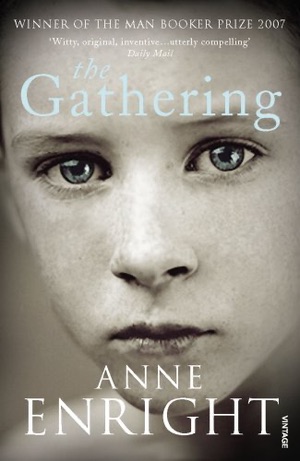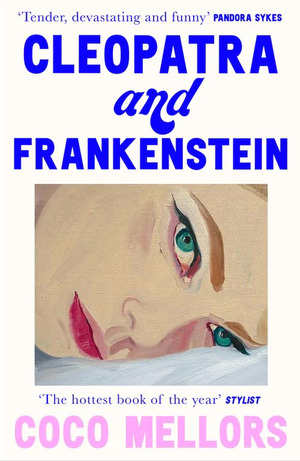Piranesi by Susanna Clarke
What a read.
I picked Jonathan Strange and Mr Norrell when I was twelve or so in the public library (translated into Spanish). It caused a great impression in me, because it wasn’t like any other fantasy book that I had read before – I’m looking forward to rereading it as an adult in its original language.
Piranesi, on the other hand, didn’t draw me in as much when I first saw it in a bookshop. I remember working at Waterstones when it won the Women’s Prize for Fiction and we were selling heaps and heaps of them. And yet, when I read the blurb, it didn’t sound attractive to me at all – it seemed so vague.
I know, judging a book only by its the blurb. I should know better.
Sure, there are many potential issues and plot gaps in this book but I adored it and I read so fast. One of the most astonishing achievements of this book – which you could call a novella because of its length and the way the plot works – it’s how it manages to suggest such a complex world in very few pages.
Piranesi has something I have a passion for: strange vast and desolate landscapes. I can’t explain it, but I feel attracted to such places, which explains why Abandoned Places is one of my favourite books to look at and chill with a cup of tea.
In Piranesi, most of the plot is set in the House, a building of mammoth proportions composed of halls with impossible tall ceilings. There’s nothing in them but statues of all the things you can possibly imagine, including, for example, a woman carrying a beehive. (Because, why not.) To complete the picture, there is also a sea in the House so now and again, and depending on the tides, some of the halls get flooded. Because of this, there are fish, and sometimes seagulls, and even albatrosses. Apart from that, there are no other beings aside from Piranesi and the Other.
Can you imagine anything more beautiful?
It reminds me to the art of one of my favourite graphic novelists, Tillie Walden, especially her first work, The End of Summer, that I recommend if you like the sound of what I’ve described.
Piranesi is the only permanent inhabitant of this desolate universe. It’s all familiar to him, though, as he knows the halls, the statues and the tides as well as one may know family members. He’s so in tune with the place that he refers to the House as if it was a sentient entity.
This is another thing that really resonated with me – the idea of a world in which everything – including the stones the statues are made of – has a soul.
The plot itself was secondary to me, because what dragged me in and kept me there was the atmosphere and the descriptions of place. When the idea of multiple universes came in I was hooked – I mean, who is not obsessed with this theory? It reminds me a bit to the strange, surreal and also desolate landscapes of the alternative worlds in The Boy and the Heron, the last Miyazaki movie I just watched and also adored. Because why would you not believe there are other worlds, right?
‘My first great insight happened when I realised how much humankind had lost…Once, men and women were able to turn themselves into eagles and fly immense distances. They communed with rivers and mountains and received wisdom from them… My contemporaries did not understand this. They were all enamoured with the idea of progresss and believed that whatever was new must be superior to what was old… It seemed to me that the wisdom of the ancients should not have vanished. Nothing simply vanishes. It’s not actually possible. I pictured it as a sort of energy flowing out of the world and I thought this energy must be going on somewhere. That was when I realised that there must be other places, other worlds. And so I set myself to find them.’
p. 88-89 – Susanna Clarke
In terms of plot holes… well, I guess I’d have liked more characterisation, as some of the characters felt a bit like caricatures – for example, the evil scholar Arne-Syles, but at the same time I understand this wasn’t the point of this book. To me, the point was recreating a very specific atmosphere and making questions about the self, and identity.
This is one book I can’t get out of my head. And I’m definitely visiting the Manchester Museum to see if I can find the mummified head of the ancient king and sheer Addedomarus (because yes, bog bodies from thousands of years ago are also an obsession of mine).
‘Once you have found the door, it is always with you. You simply look for it and there it is. Following the insights that Addedomarus had given me, what I eventually concluded was that it was necessary to cleanse one’s vision in order to see the door. To do this one must return to the place, the geographical location where one last believed the world to be fluid, responsive to oneself. In short one must return to the last place in which one had stood before the iron hand of modern rationality gripped one’s mind.’
p. 152 – Susanna Clarke
The Unfamiliar by Kirsty Logan
I love everything Kirsty Logan writes, and her horror short story collection Things We Say in the Dark is a particular favourite of mine. So, of course, I had to read this book too. I actually listened to it as an audiobook because I saw it was narrated by the author, and I recommend it in this version, since the whole story it’s told in the second person point of view, so it becomes a very intimate, powerful experience to hear Logan whispering all of this into your ear. Specially as you walk to work in dark, rainy December mornings.
I’d read some reviews in which the use of the second person point of view was criticised – it is quite an experimental approach, I agree. Other reviews also commented on how the author’s tone was almost too honest. Well, to me these were the strengths of the book. This is a raw, sincere account of queer motherhood, and, as a queer person myself, I’m so eager to listen to more unfiltered experiences like this that tell me everything, from the decision to have a child in a family that’s not conventional to the immense pain of loss, the fear of miscarriage, the strangeness of pregnancy.
The account of the birth was really hard for me to listen to but again I do want to know about real experiences of women giving birth which all in all sounds like such a terrifying quest to me (pushing a whole human being out of your body????) What scared me the most was her account of being so vulnerable in the hospital, suffering from so much pain while everyone around her (midwives, nurses, doctors) went through the motions of their jobs and treated her like it wasn’t such a big deal. I mean, excuse me, pain is a big deal, and again, growing and pushing a human baby out of your body is a big deal. As someone who is terrified of losing control, I can’t quite process the idea of having to let go in such a way, and I’m really scared of feeling like I’m just a piece of meat in doctors’ and nurses’ hands (yes, I hate hospitals). After reading this I was left wondering if the medical system has to change, if there’s another way of making women feel a bit more human and cared for when they have to give birth, no matter how wrong it goes.
Although at the same time, Logan’s account of going for brunch with her baby and her family three days after the most traumatic birth shows that one can survive the horror of an emergency cesarean. And that very troubling experiences and sweet mundane moments can often exist very close in time.
The Hours by Michael Cunningham
I watched the film ages ago when I came out in the early 2000s and I was quite disturbed yet intrigued by it – especially by its queerness and its themes around mental health and suicide (I wasn’t even ten years old when I watched this). I read another of Cunningham’s novels a couple of years ago, A Home at the End of the World, and really enjoyed it, so I was happy to go back to his writing. One of the things I loved most about this other novel is its depiction of a non-traditional family, that is, two fathers and a mother, all living together with a child, (even though in the ending this arrangement ended in failure for the characters involved, which made me feel a bit disappointed…)
Let’s go back to The Hours. First of all, I really enjoy Cunningham’s writing style and the way he writes third-person close narratives that feel very intimate a character-driven. The story follows three timelines and three different characters: Virginia Woolf, Laura Brown (a housewife in 1949’s LA) and Clarissa Vaughan, a fifty-something woman in 1990’s New York.
This book deals with some dark and heavy themes, but I’ve always felt curious and interested in the darker aspects of the human experience and I personally find a lot of comfort on reading about what worries and scares me. It was really interesting to get to know about three different people who consider the idea of suicide for very different reasons. We have Virginia Woolf and Laura Brown, women who feel trapped in their circumstances and are desperate for way out no matter the cost. And then there is Richard, Clarissa Vaughan’s friend and former lover, ill with AIDS, who is also looking for a way out even if Clarissa and many of his friends are caring for him and trying to show him that there’s still enough to live for.
One thing I noticed when reading this book that initially bothered me quite a lot was that the women (as the book is narrated from the point of view of these three female main characters, mostly) have quite negative views of their own physical appearance. In several parts of the novel Virginia avoids looking at herself in the mirror because she doesn’t like her reflection. Clarissa struggles with the idea of becoming old and, hence, not beautiful anymore. Laura Brown looks at her friend, (and love interest), Kitty, who is beautiful in her eyes (whereas Laura herself sees her own physique as plain) and fantasises with her getting older and fatter and not as desirable by others anymore.
‘She [Kitty] seems, briefly, like a simple, ordinary woman seated at a kitchen table. Her magic evaporates; it is possible to see how she’ll look at fifty – she’ll be fat, mannish, leathery, wry and ironic about her marriage, one of those women of whom people say, She used to be quite pretty, you know.’
p. 107 – Michael Cunningham
Even the male characters have this negative vision of the women around them. For example, Louis, Richard former lover who’s just back in town, looks at Clarissa’s daughter and realises that she was an ugly teenager and even now, as a nineteen-year-old, she’s still not pretty.
‘When he saw her last she was thirteen or so, slouchy and overweight, embarrassed by herself. She still isn’t beautiful, she’ll never be beautiful, but she’s acquired a measure of her mother’s presence, that golden certainty. She is handsome and assured in the way of a young athlete, her head all but shaved, her skin pink.’
p. 136 – Michael Cunningham
This bothered me because the idea of beauty (whatever beauty means in our Western standards) and womanhood seem to be intrinsically connected in a troubling way. And yet, the more I thought about this the more I realised that no matter how much I hate reading this in Cunningham’s work… this is my own experience of womanhood. I also try not to look at myself in the mirror because I’m not always happy with what I see – and it’s been this way since I was a preteen. I also constantly compare myself to other women (like Laura does with Kitty, her friend) and if I’m thinner than someone else I find myself relieved thinking that well, at least I’m not that fat. These are obviously very problematic thoughts that come before I can analyse them and deconstruct them. To a point, it seems they were in me before I could decide if I wanted them or not. This novel did send me down a rabbit hole of considerations about female performance, beauty standards and bodily appearance. I like it when books make me think or bother me like this.
In the end, both Virginia and Laura in the book are women who must repress many things, including their queerness. Clarissa is freer than them to embody who she really is – a bisexual woman married to another woman with whom she has a daughter. Richard, on the other hand, is dying of AIDS, an illness that has been heavily stigmatised and unfairly linked to the queer community. This is a sad, dark book, but many things in it rang true to me when it came to its portrayal of mental health in relation to societal expectations around bodies, genders and sexualities.
‘We throw our parties; we abandon our families to live alone in Canada; we struggle to write books that do not change the world, despite our gifts and our unstinting efforts, our most extravagant hopes. We live our lives, do whatever we do, and then we sleep – it’s as simple and ordinary as that. A few jump out of windows or drown themselves or take pills; more die by accident; and most of us, the vast majority, are slowly devoured by some disease or, if we’re very fortunate, by time itself. There’s just this for consolation: an hour here or there when our lives seem, against all odds and expectations, to burst open and give us everything we’ve ever imagined, though everyone but children (and perhaps even they) knows these hours will inevitably be followed by others, far darker and more difficult. Still, we cherish the city, the morning; we hope, more than anything, for more.’
p. 255 – Michael Cunningham
Bones and All by Camille DeAngelis
This was a present from my sister who knows how much I love horror. I haven’t watched the movie adaptation but I’m now very curious about it. It’s funny, but because I had watched the trailer I thought this was going to be straight adult horror – very much like the work of authors like John Ajvide Lindqvist, Clive Barker or Mariana Enríquez. But this is actually young adult, which explains many things, especially the focus on its teenage narrator and the absence of the most gruesome descriptions I was kind of hoping to find here.
I have to say, though, that this book has one of the best first chapters I’ve ever read. In it, the narrator, sixteen-year-old Maren, recounts her first memory of cannibalism (which consisted on eating her babysitter). From then on the story focuses on Maren’s experience of love and desire towards boys from her childhood to her teenage years. At the beginning I was a tad confused, I didn’t know why there was so much emphasis on all the boys and young men Maren had fallen for (and eventually eaten, because her lust and her cannibalism are very much interlinked). But as the book was coming to an end I realised that the story was doing something really interesting. Maren is a young woman, which makes her vulnerable, especially as she starts wandering around the States on her own (looking for her father, who she hasn’t seen for many years, after her mother abandons her because she can’t cope with having to cover Maren’s gruesome cannibal acts any more). As a vulnerable sixteen-year-old she of course encounters many men who, seeing her alone, try to come and help her, save her, take advantage of her. Many times in the book you think she’s going to end up being raped, for example, because she keeps getting into this tricky situations with men who we can’t be completely sure mean no harm. And then, as a reader, you realise that Maren is not that vulnerable because actually she has a ravenous hunger and a compulsion to eat human flesh that she can actually only indulge on it once she’s alone with these men in isolated places, because this means there won’t be anyone else to stop her, to help the men, or to even witness her atrocious acts. The duality of Maren (a very realistic sixteen-year-old, naïve at times, a bit of a mess, also sweet and hopeful) and her incredible ability to consume human flesh in great quantities in a very brief span of time makes her a monster, and the men are no more than prey for her.
I found that this book did very interesting things in terms of gender and in subverting the figure of the teenage girl in horror from victim to monster, and I say ‘monster’ here not in a denigratory way, but with amazement.
All in all, a book I enjoyed quite a lot. The ending, just like the beginning, is incredibly well-written, and probably one of my favourite parts here too.
Teoría King Kong (King Kong Theory) by Virginie Despentes
I had read Anarquía Relacional (Relationship Anarchy) in April and I enjoyed a lot. It came with a bibliography and from it I discovered other different books I ended up purchasing, including this one.
King Kong Theory is short, but oh my, there is so much to unpack here, even if only takes a few hours (if so) to devour it. I read it in Spanish, which is a translation from the original French. Despentes writes in a style that is direct, shameless, sometimes shocking and brute, but I enjoyed it. She makes very daring points. One of the most interesting chapters are her ideas of rape and rape culture – and how she points out that the threat of rape and sexual abuse has been keeping women confined to what are considered their ‘safe’ spaces (I put this in quotation marks because statistics tell us that women are often assaulted by those closer to them, including family members and partners). This has kept them complacent, because rape only happens to the ‘bad ones’ and when it does, it destroys the purity of the female body, it taints the woman forever and ever like a curse.
‘Summer 2005. Philadelphia. I’m in front of Camille Paglia interviewing her for a documentary. I nod as she speaks, completely into what she’s saying. “In the sixties, in university campus, girls would be confined to their dormitories at six in the evening whereas boys could do whatever they wanted. We asked, “why are you treating us differently?” And they explained to us “because the world is dangerous and if you go out you take the risk of getting raped.” And we said: “if that’s the case, give us the right to get raped.”‘ (my translation)
‘Verano de 2005, Filadelfia, estoy frente a Camille Paglia realizando una entrevista para un documental. Asiento con la cabeza, ensimismada escuchándola: “En los años sesenta, en los campus universitarios, se encerraba a las chicas en los dormitorios a las seis de la tarde, mientras que los chicos podían hacer lo que querían. Nosotras preguntábamos: “¿Por qué esta diferencia de trato?”. Nos explicaron: “Porque el mundo es peligroso, corréis el riesgo de ser violadas.” Respondimos: “Entonces dadnos el derecho a correr el riesgo de ser violadas”’
p. 51 – Virginie Despentes
Another chapter was a defence of sex work – pointing out that married women have traditionally been forced into the role of sexually pleasing their husbands but they are not paid for it – housewives are not compensated in any way, actually, as our capitalist state doesn’t recognise the work of keeping a house and rearing children as worth of being remunerated. Which is something that has been bothering me in the last few years. I, for one, get often overwhelmed with the pressures of my full-time job in academia, my writing and the fact that I also need to feed myself and keep my house tidy, and my cats happy. And I don’t even have children.
Talking to my friends, we remembered how, say, our grandfathers also had to work many hours outside the house to make ends meet. But their wives would wake up before they did to make them breakfast, and they had the house clean, and the food on the table when they arrived from work. (Can you imagine? The luxury of it…) Of course, back then one salary could support a whole family which these days is not at all that viable. My mother was a woman with two jobs – her full-time job as a secondary teacher outside the house and her other full-time job as a housewife and mother in the house.
‘If the sex worker has decent conditions in which to carry her work, similar to those of the beauty salon worker or the psycotherapist, if we free her profession of all the legal pressures it’s currently under, then the role of the married woman becomes a bit less interesting. Because if we normalise the contract of sex work, the contract of marriage appears, in a more obvious manner, like what has always been, an exchange in which the woman commits to a certain number of ungrateful tasks to ensure her man’s comfort and she does that for a tariff that can’t be raised according to market value. Specially when it comes to sexual tasks.’ (my translation)
‘Si la prostituta ejerce su negocio en condiciones decentes, similares a las de la esteticista o la psiquiatra, si libera su actividad de todas las presiones legales que se ejercen actualmente sobre ella, entonces la posición de la mujer casada se vuelve de repente menos interesante. Porque si se banaliza el contrato de la prostitución, el contrato del matrimonio aparece de modo más claro como lo que es: un intercambio en el que la mujer se compromete a efectuar un cierto número de tareas ingratas asegurando así el confort del hombre por una tarifa sin competencia alguna. Especialmente las tareas sexuales.’
p. 69 – Virginie Despentes
But perhaps, what resonated the most to me in this book was Despentes definition of womanhood as a farce. A pretence. She says:
‘After years of good, loyal and honest investigation I’ve reached this conclusion: femaleness is a fucking farce. It’s the art of being servile. We can call it seduction and make it sound more glamorous, but it isn’t really an elite sport. Generally, it’s more about getting used to behaving like someone inferior. Enter a room, look for any men in there, have the need to please them. Femaleness is don’t talk too loud. Don’t express yourself in a tone that can be seen as too categoric. Don’t sit with open legs. Don’t talk in an authoritative tone. Don’t crave prestige. Don’t laugh too loud. Don’t be too funny. To be liked by men is a complicated art which demands we erase in ourselves anything that is connected to the dominance of strength. In the meantime, men, at least men my age, they don’t have a body, they aren’t seen as an age, or a size. Any red-faced asshole with a beer, fat and ugly as shit can comment on the physical appearance of girls, he can make very harming comments about them if he doesn’t find them dressed and styled in a way he finds agreeable, he can say disgusting things to them if he’s angry because he can’t fuck them. These are the advantages of his sex… To feel awkward, that’s something we can associate with being female. To be eclipsed. To listen very attentively to everything you’re told. Not focusing on being intelligent… Chatting is seen as something feminine. Everything that doesn’t really leave a trace. Everything that is domestic, everything that needs to be done day after day but we don’t even name. We’re not talking here about great speeches, great books, great things. We’re talking about small things. Cute stuff. Feminine stuff. But drinking, yeah, that’s manly. To have friends: manly. To be a clown: manly. To earn loads of money: manly. To have a huge car: manly. To behave like nobody cares: manly. To laugh while you smoke pot: manly. To have a competitive spirit: manly. To want to fuck lots of people: manly. To respond aggressively to a threat: manly. To be aggressive: manly. To not waste time getting ready in the mornings: manly. To wear practical clothing: manly. All the fun things are manly. This hasn’t changed all that much in the last forty years. The only significant advance is that now we can support our men financially. Because actually, getting a real job is too much for those men who are artists or thinkers, men who are extremely complex and terribly easy at the same time. Minimum salary, that’s a woman’s thing. Evidently, to make up for supporting a man financially women must understand that these men may turn aggressive and even bitter. Because it’s not easy when you belong to the race of the great predators to not be the one who brings the bacon home. Men, so cool, we spend our lives understanding them. Because great desperation is also linked to a specific gender, ours, we are all so well versed and practiced in nagging.
I’m not saying that being a woman is in itself a horrible obligation. There are some who do it pretty well. What is annoying is the fact that it is an obligation… To do ice skating, for example, is also very pretty. However, nobody demands us all to engage in that particular activity. Riding a horse can also be nice. But they don’t give you a saddle the moment you’re born.’ (my translation)
‘Después de unos años de buena, leal y sincera investigación he acabado llegando a esta conclusión: la feminidad es una puta hipocresía. El arte de ser servil. Podemos llamarlo seducción y hacer de ello un asunto de glamour. Pero en pocos casos se trata de un deporte de alto nivel. En general, se trata de acostumbrarse a comportarse como alguien inferior. Entrar en una habitación, mirar a ver si hay hombres, querer gustarles. No hablar demasiado alto. No expresarse en un tono demasiado categórico. No sentarse con las piernas abiertas. No expresarse en un tono autoritario. No hablar de dinero. No querer tomar el poder. No querer ocupar un puesto de autoridad. No buscar el prestigio. No reírse demasiado fuerte. No ser demasiado graciosa. Gustar a los hombres es un arte complicado, que exige que borremos todo aquello que tiene que ver con el dominio de la fuerza. Entretanto, los hombres, en todo caso los de mi edad, no tienen cuerpo. Ni edad, ni corpulencia. Cualquier idiota con la cara roja por el alcohol, con barriga y un look de mierda puede permitirse hacer comentarios sobre la apariencia física de las chicas, comentarios desagradables si no las encuentra suficientemente arregladas u observaciones asquerosas si le da rabia no podérselas tirar. Esas son las ventajas de su sexo… Estar acomplejada, he aquí algo femenino. Eclipsada. Escuchar bien lo que te dicen. No brillar por tu inteligencia… Charlar es femenino. Todo lo que no deja huella. Todo lo doméstico se vuelve a hacer cada día, no lleva nombre. Ni los grandes discursos, ni los grandes libros, ni las grandes cosas. Las cosas pequeñas. Las monadas. Femeninas. Pero beber: viril. Tener amigos: viril. Hacer el payaso: viril. Ganar mucha pasta: viril. Tener un coche enorme: viril. Comportarse, no importa cómo: viril. Reírse tontamente fumando porros: viril. Tener espíritu de competición: viril. Ser agresivo: viril. Querer follar con mucha gente: viril. Responder con brutalidad a algo que te amenaza: viril. No perder el tiempo en arreglarse por las mañanas: viril. Llevar ropa práctica: viril. Todas las cosas divertidas son viriles, todo lo que hace que ganes terreno es viril. Eso no ha cambiado tanto en cuarenta años. El único avance significativo es que ahora podemos mantenerles. Porque el trabajo alimenticio es demasiado exigente para los hombres que son artistas, pensadores, personajes complejos y terriblemente fáciles. El salario mínimo es más bien una cosa de mujeres. Evidentemente, en contrapartida, habrá que entender que ser unos mantenidos les puede transformar en tipos violentos o desagradables. Porque no es fácil, cuando se pertenece a la raza de los grandes cazadores, no ser el que trae la comida a casa. Los hombres, qué guay, nos pasamos la vida comprendiéndolos. Porque la desesperación grandiosa también tiene sexo, en nuestro caso, practicamos el gemido quejica.
No digo que ser mujer sea en sí mismo una obligación horrible. Las hay que lo hacen muy bien. Lo que resulta desagradable es el hecho de que sea una obligación. Evidentemente, las grandes seductoras son, cuando se trata de divinidades locales, las reinas del mambo. Hacer patinaje artístico es también muy bonito. Y, sin embargo, no nos exigen a todas que seamos patinadoras. Montar a caballo también tiene su punto. Y, sin embargo, no te dan una silla y un caballo nada más nacer.’
p. 147-150 – Virginie Despentes
All in all, a daring and thought-provoking book that I think everyone should read and talk about.
The Priory of the Orange Tree by Samantha Shannon
This book had been on my list of things to read for the longest time. I love fantasy and I know this one in particular has been compared to books such as The Lord of the Rings (which I adored as a child). Because I was off during the last week of December I thought this book would be ideal to take with me on a trip and I assumed it’d keep me entertained for weeks (the book is more than eight hundred pages long).
The first third I was curious about the world and about the characters, but I wasn’t completely obsessed with it. One of the things I found interesting was the diversity of this fantasy world: the land and the countries have made up names but you can see they are inspired in real-life places such as the United Kingdom (Queendom of Inys), China (Empire of the Twelve Lakes), Japan (Seikii), Turkey/Iran (Draconic Kingdom of Yscalin), the Netherlands (Free State of Mentedon), Nigeria (Domain of Lasia), amongst others (these are all my own assumptions, by the way). The spotlight is also on the female characters rather than the male characters, which I also found interesting and refreshing.
Now, once I was through the first third of the book things started becoming way more absorbing plot wise. This is a book with several narrators situated in very different places so at the beginning we jump from one setting to the other in what seems a random manner. But once the connections start emerging the stakes get higher – then I found myself much more invested in the story and the characters.
This is a plot-led novel and even though I find the idea of an evil-monster as a threat to the world a tad tiring I can forgive that though because I found the world-building and the characters enticing enough. And in the end, yes, I wanted my favourite protagonists (Tané, Ead, Sabrian) to be fine, and I wanted the all-evil dragon to be defeated forever.
Something I think this book did quite well was to complicate the idea of myths – for example, how myths can be used as founding pillars for religions and even countries (as it happens in the case of the Queendom of Inys). And also how myths can be used to justify oppression: the same story can be told in very different ways depending on who tells it – for example, the story of Sir Galian and Princess Cleonid is very different if you hear it in the Queendom of Inys or in the Domain of Lasia.
All in all, I think Shannon did an excellent job to create a vibrant world-building that attempts to reflect a plural world indirectly inspired in some real mythologies from all over the world. I’m curious about this author and I’ll definitely read more of her books.
Los Brotes Negros (Dark Outbursts) by Eloy Fernández Porta
A little book that was very hard to read because its theme. It addresses the topic of mental health – especially anxiety and depression – in all its rawness. It was difficult to read, as I’m someone who has experienced some of the things the author writes about and felt shame by them. Reading this was challenging – but also comforting.
This book has some very interesting ideas about the idea of ‘madness’ and how this word is used to show contempt and even disgust to others affected by mental illness – in a way we wouldn’t do towards someone afflicted by a physical illness like, say, cancer.
Eloy Fernández Porta also reflects about the way his mental illnesses relate and connect to his career as a writer. The difficult task of going through the experience of being somehow popular and then less popular for no apparent reason. The cruelty of the market – how we pour our hearts in our books but then we need to hand them to editors and publishers and sometimes these books don’t reach as many people as we would have hoped. All of this on top of how difficult it is to make a living in the literary industry – badly paid jobs on fixed term contracts if you try to make a career in academia, freelance contracts in which they offer ridiculous quantities of money (or directly, no money at all) because they know people would do these jobs anyways out of love, out of passion.
I sometimes feel frustrated about the fact that many in the publishing industry can make a living out of it (if they are more or less lucky) for example editors, marketing executives, people who design covers, proof readers, even literary agents. But what happens to the writers? Everyone around me (even writers you would think are very successful) have to have another job, because advances and royalties are rarely enough to survive on (I’m not even talking about making a decent income). I once talked about this with a colleague who is a lawyer and she told me the reason writers can’t make a living out of their craft is because so many of us write for free. So our profession is incredibly devaluated.
Another interesting thing was Porta’s reflections on gender – how mental illness and hysteria have traditionally been associated to the female gender and when it comes to men these ailments are completely erased.
‘This mater comes up in other retellings about the sorrows of psychological damage which, I believe, usually combines two factors: the hierarchy of feelings and their relationship to gender. In the story about his depression, in the part where he imagines his own suicide, William Styron reflects on the surprising explanation given to the suicide of someone who was seen as the ‘ideal’ survivor, Primo Levi. Styron says “having to take on his paraplegic mother’s care was for him even more difficult than his experience in Auschwitz.” This is, like it often happens when it comes to suicide, a mere speculation, although we can say that perhaps the emotional strength and endurance that the Italian writer would have needed to take care of his mother had already been used when he was in the concentration camp. This is how I imagine my own situation, that of someone who doesn’t have any more capacity to deal with extreme situations, and to this I add my own certainty that with age people’s capacities worsen and wane. On the other hand, and considering debates around the practice and the industry of care, we should also consider the following hypothesis: what killed Primo Levi was his own gender education; the same training that prepared him to behave “like a man” in the worse moments of the war but left him without resources in the “female” position of having become a carer. The question of masculinity in the matter of evaluating sorrow and grief came up again a few years ago with the publication of the memoir by the psychiatrist Carlos Castilla del Pino, and in particular of a passage in this book where he explains, with astonishing honesty, how not being promoted to the rank of professor at university had affected him more than the death of his own daughter… The lesson here, if I understand this story correctly, is that through the forge of the masculine self, men learn to deal only with the suffering they can explain plausibly (to preserve their sense of self-worth). In the case of his daughter, Carlos Castilla del Pino could cope with her death because it could be explained from a biological point of view (she had an incurable disease) whereas in the other situation (not being promoted to the highest university rank) he felt that his own identity had been left irrevocably damaged by professional humiliation.” (my translation).
‘Este asunto aparece en otros recuentos de los males que configuran el dolor psíquico y, según pude comprobar, suele combinar dos factores: la jerarquía de los sentimientos y su relación con el género. En el relato de su depresión, en la parte donde imagina su suicidio, William Styron se hace eco de la sorprendente explicación que en su día se dio de la muerte por su propia mano del superviviente por antonomasia, Primo Levi: “asumir la carga de su madre paralítica resultaba para su ánimo más oneroso aún que su experiencia de Auschwitz”. Se trata, como en todos los menesteres que tienen que ver con el suicidio, de una especulación, y no cabe descartar que en las fuerzas que el escritor italiano hubiera necesitado para atender a su madre las hubiera gastado todas en el campo de exterminio; de una manera análoga imaginaba yo mi propio caso, como el de alguien que ha agotado su capacidad para lidiar con las experiencias extremas, lo que se añadía a la certidumbre que he tenido desde siempre que con los años las personas empeoran y se gastan. Por otra parte, a la luz de los debates actuales de las prácticas e industrias de cuidado, no cabe descartar la hipótesis de que a Levi le matara su propia educación de género: la formación que le preparó para comportarse “como un hombre” en los peores momentos de la guerra pero le dejó sin recursos en la posición “feminizada” del cuidador. La cuestión de la masculinidad en la evaluación de las desgracias apareció también, hace unos años, con motivos de la publicación de las memorias de Carlos Castilla del Pino, y en particular de un pasaje donde explica, con desconcertante sinceridad, que perder el concurso para una cátedra universitaria le había afectado más que la muerte de su hija… La lección, si lo entiendo bien, es que en la forja del yo masculino tiene importancia una gradación de los males posibles en la cual se imaginan, a fin de salvaguardarlo, explicaciones plausibles. En el caso de la hija pudo agarrarse a una explicación biológica (fue una enfermedad incurable), mientras que en el otro hubo de sentir que era su identidad por entero que quedaba irremediablemente dañada por la humillación profesional.’ (p. 48-49)
p. 48-49 Eloy Fernández Porta
A hard read, it touched on a lot of fears (the harshness of the artistic career, the anguish of suffering from mental health illness) but still honest and enlightening.
La mujer imposible (The Impossible Woman) by Ana Pérez Cañamares
An honestly written memoir from the perspective of a woman in her fifties. In a society where we all feel scared of aging – but, in the case of women, this real fear is paired with facing invisibility – I’m more than eager to read writing from women older than myself.
Ana Pérez Cañamares narrates her childhood in Madrid – she’s the youngest of four, in a family whose parents were already ‘old’ when she was born. She focuses on that strange dichotomy so many of us women have been brought up in: on the one hand we are educated as people pleasers, but also, we are empowered by parents (often mothers) who encourage us to be financially independent (specially if they weren’t, as is the case of Ana’s mother) and take our own decisions.
Cañamares’ life is full of adventurous times – there are beautiful and intense descriptions of her travels in India, for example, and her sexual adventures – and also the mundane – she writes very well about the pure boredom she struggles with in a job she has for decades, a job that is not very well paid but is permanent and secure.
She makes emphasis on her somehow late awakening as a feminist – a moment in which she realised she had spent a lot of her time and efforts chasing men instead of nurturing her friendships with women (when, in reality, she valued her friendships much more than the occasional romantic relationships she engaged with).
This is also a book about writing memoir. Cañamares starts as a poet and then, later on, becomes an essayist and writer of her own personal experiences. I particularly liked her reflection on realising the power of writing from her own perspective:
‘To read female writers is a celebration, a catharsis, often a painful experience which makes me feel both sadness and anger. But, in any case, I like to remind myself that what happens to me is finally made important and visible (I’m not only the girlfriend, the mother, the dead woman, the secondary character); in other women’s writing I find experiences and emotions that I had never found represented outside myself. These experiences catapult themselves to the page, act as a bridge between what they tell us we need to be and what we really are… During a long time we’ve seen ourselves represented through the eyes of others. This has made us confuse being loved with being desired, being feared with being envied or adored. Only when we talk with other women and we listen to each other we start seeing ourselves in a clearer way’ (my translation)
‘Leer a escritoras es una celebración, una catarsis, a veces también una experiencia dolorosa, que me lleva a la tristeza y a la rabia. Pero, en cualquier caso, me digo que por fin lo que me ocurre importa y es visible (ya no soy la novia, la madre, la muerta, la secundaria); en sus escritos están vivencias y emociones que nunca antes me había encontrado plasmadas fuera de mí, las que dan el salto y salvan el abismo entre la que nos dicen que somos o tenemos que ser y las que existimos en la realidad… Durante tanto tiempo nos hemos visto representadas a través de los ojos de otros que hemos confundido todo, ser querida con ser deseada, temida, envidiada o adorada. Solo cuando nosotras hablamos y nos escuchamos empezamos a vernos con claridad.’
p. 197-198 – Ana Pérez Cañamares
Yellow Face by R. F. Kuang
I’ve wanted to read this book for a while – specially after reading Kuang’s interview in The Guardian a while ago. I completely agree with her in matters of cultural appropriation – specially with this statement:
“We’re storytellers, and the point of storytelling is, among other things, to imagine outside of your lived experience and empathise with people who are not you, and to ideally write truthfully, and with compassion, a whole range of characters… Otherwise all we could ever publish are memoirs and autobiographies and nobody wants that… Are they [authors] engaging critically with tropes and stereotypes that already exist in the genre? Or are they just replicating them? What is their relationship to the people who are being represented?… [the permission to speak] usually gets wielded as a double-edged sword against marginalised writers, to pigeonhole them into only writing about their marginalised experiences. And I hate this. It really functions as another form of gatekeeping.”
R. F. Kuang
Yellowface is such an uncomfortable read. You know when there is some Twitter drama (I refuse to call it by whatever name they’ve given it these days) and you can’t avoid but scroll down and down endless threads, each becoming more and more aggressive and virulent, and by the end of it you’ve spent hours looking at a screen reading about the issues of people you don’t really care about and you feel a bit yucky inside? That’s how I felt when I read (most of) this book. It was painful, it was incredibly cringey… but I couldn’t stop.
By the way, all of the above are not criticisms to this story. I think those kind of feelings were the point of a story like this. The novel focuses on June Hayward, a white writer from Philly who wants to make it in the literary scene but after getting an agent that’s not terribly into her and publishing a first novel that had no much of an impact she has to make do with annoying jobs and the desperation of not being successful enough (this is a position many of us are in, and I don’t think is the worst thing in the world, by the way). The problem is she has an acquaintance / frenemy in Athena Liu, an incredibly successful writer, daughter of Chinese immigrants in the States. When Athena Liu dies in a silly accident (an impromptu pancake eating competition with Juniper after both of them have been drinking all night) Juniper decides to steal a manuscript that Athena, being a very private writer, hasn’t shown to anyone else yet.
Juniper rewrites the novel – all about the Chinese people who went to help the Allies during the First World War but were in turn treated extremely badly by them. She publishes the novel, and it becomes a success. However the way her publishers handle the whole thing is disgusting to say the least. For one, her editor makes her change various points in the novel to ‘smooth out’ the more heartbreaking parts of the tragedy (and not trouble white audiences too much). But the worse is when they suggest she publishes the novel under the pen name of Jun Song (Song is her middle name, given to her by her mother during a hippy phase). This is, of course, pure marketing strategy to let some readers assume she has an Asian background. (And of course, it’ll backfire later in the novel).
Overall, this is a story that shows how the publishing industry is like any other industry in this late capitalist society: the most important thing is that books are sold, and it doesn’t really matter what strategies are employed to push said books into the market as long as they bring money back (at some point in the novel Juniper is assured by agents and editors that social media backlash and scandal, as painful as they may be for her, are skyrocketing the sales of the book).
If I have any criticism for this book is how the characters – specially Juniper, towards the end of the book – feel a tad like caricatures. This novel is more about the plot, though, the twists, and making the cringe harder and harder to cope with every turn of the page. I didn’t quite buy Juniper’s absolute madness towards the end – I kept thinking, but surely this character cares about more things than success at any rate? No?
Yet, I enjoyed it and I thought it had many thought-provoking scenes and after reading this I’m more convinced than ever that I don’t want to have any social media as a writer (or as a human being, for that matter).
